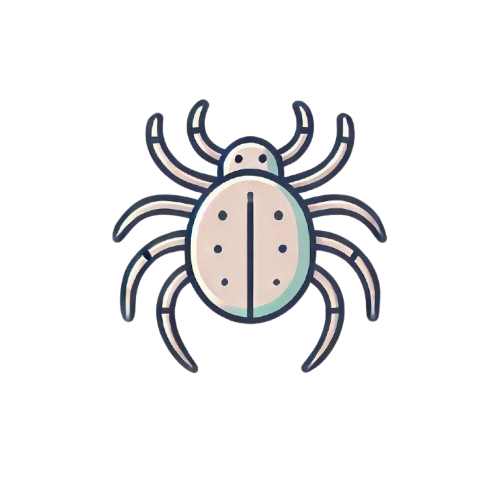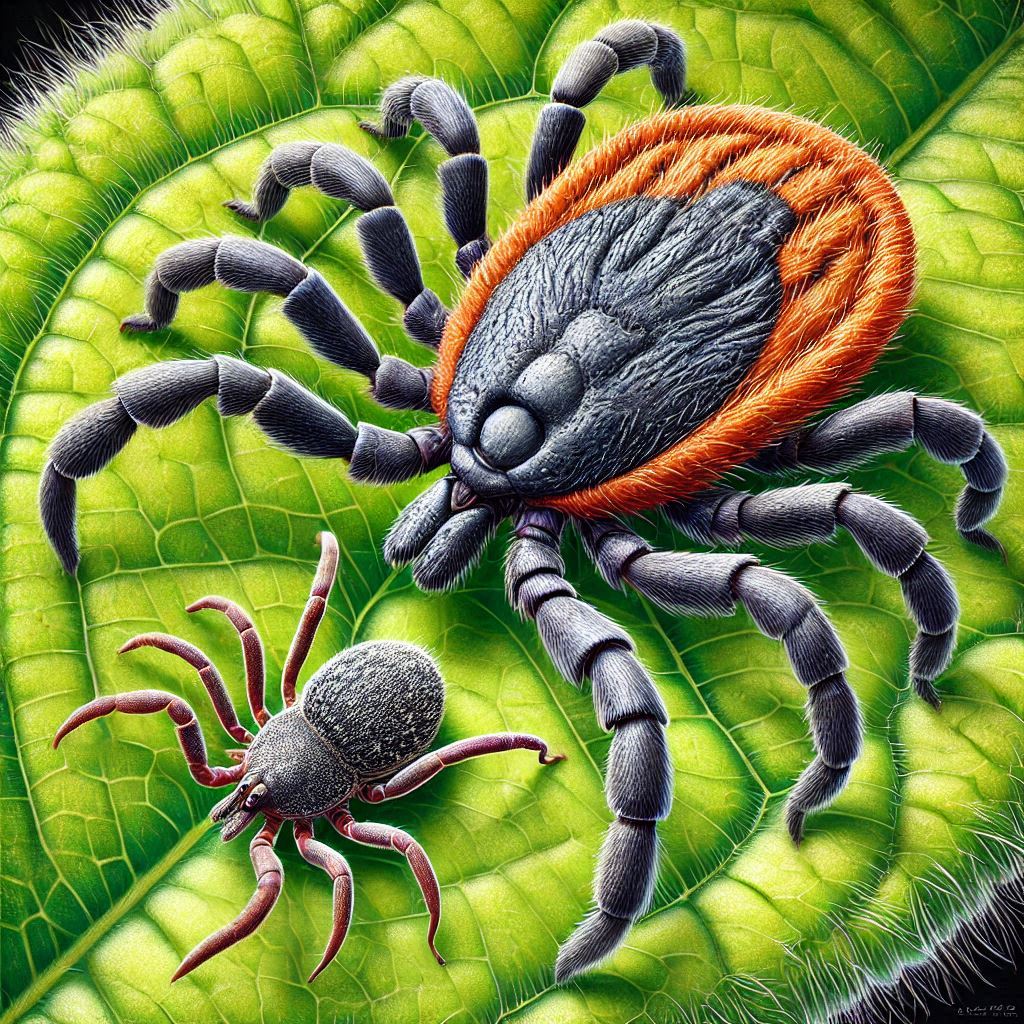here are 50 fascinating facts about mites and ticks:
- Biocontrol: Some predatory mites are used in biological control to manage pest populations.
- Ancient Origins: Ticks have been found in amber dating back over 90 million years.
- Tiny Size: Many mites are microscopic, with some species as small as 0.1 mm.
- Arachnids: Both mites and ticks belong to the arachnid class, making them relatives of spiders and scorpions.
- Life Cycle: Ticks go through four life stages: egg, larva, nymph, and adult.
- Blood Feeders: Ticks are obligate blood feeders, meaning they must feed on blood to survive.
- Diverse Habitats: Mites can be found in almost every environment on Earth, from deep-sea vents to high mountain ranges.
- Disease Vectors: Ticks are known vectors of various diseases, including Lyme disease, ehrlichiosis, and Rocky Mountain spotted fever.
- Parasitic Mites: Some mites are parasites that live on the skin of their hosts, such as the scabies mites.
- Plant Pests: Many mites are significant agricultural pests, damaging crops and ornamental plants.
- Decomposers: Mites play a vital role in soil ecosystems by breaking down organic matter.
- Spider Mites: Spider mites are common pests of houseplants and crops, known for their web-spinning behavior.
- Ticks’ Hard Shell: Hard ticks have a tough outer shell called a scutum.
- Tick Paralysis: Some ticks can cause paralysis by injecting neurotoxins during their bite.
- Ear Mites: Ear mites are common parasites in pets, particularly cats and dogs.
- Dust Mites: Dust mites thrive in human habitats and are a common cause of allergies.
- Chiggers: Chiggers are larvae of certain mites that cause intense itching and skin irritation.
- Tick Bites: Tick bites can go unnoticed for days as ticks secrete anesthetic substances.
- Lifespan: Some tick species can live for several years, even without feeding.
- Ticks’ Heat Sensing: Ticks use heat sensors to locate their hosts.
- Feather Mites: Feather mites live on birds and feed on oils and debris in feathers.
- Resistant to Freezing: Some mite species can survive extremely cold temperatures.
- Water Mites: There are aquatic mites that live in freshwater and marine environments.
- Tick Mouthparts: Ticks have specialized mouthparts called chelicerae that they use to cut into their host’s skin.
- Large Variety: There are over 900 species of ticks and thousands of mite species.
- Ticks and Dogs: Dogs are particularly susceptible to tick infestations.
- Fossil Evidence: Mite fossils have been found in amber dating back to the Cretaceous period.
- Symbiosis: Some mites live in a symbiotic relationship with other organisms, such as insects.
- Asthma Trigger: Dust mites are a known trigger for asthma attacks.
- Ticks’ Stealth: Ticks can detect carbon dioxide and body heat to find hosts.
- Mangrove Mites: Some mites live in mangrove ecosystems, contributing to nutrient cycling.
- Long Questing: Ticks can wait for months to years on vegetation until they find a host.
- Economic Impact: Ticks and mites can cause significant economic losses in agriculture and livestock.
- Overwintering: Some mite species can enter a state of dormancy to survive harsh conditions.
- Diverse Diets: While many mites are herbivores, others are carnivores, omnivores, or detritivores.
- Self-Amputation: Some mites can shed their legs to escape predators.
- Tick Hosts: Ticks feed on a variety of hosts, including mammals, birds, reptiles, and amphibians.
- Mite Silk: Some mites produce silk to create protective shelters.
- Tick Saliva: Tick saliva contains anticoagulants that keep their host’s blood flowing.
- Scabies: Scabies mites burrow into human skin, causing intense itching.
- Medical Research: Studying ticks and mites can help develop new treatments for allergies and vector-borne diseases.
- Social Mites: Some mites display social behaviors, living in colonies and cooperating.
- Tick Eggs: Female ticks can lay thousands of eggs in a single batch.
- Human Hosts: While mites mostly affect other animals, some species like dust mites and scabies mites can infest humans.
- Varied Mite Shapes: Mites come in a variety of shapes and sizes, adapted to their specific habitats.
- Allergy Avoidance: Regular cleaning and vacuuming can help reduce dust mite populations in homes.
- Tick Removal: It’s important to properly remove ticks using fine-tipped tweezers to avoid infection.
- Study of Acarology: The study of mites and ticks is called acarology, and it plays a crucial role in understanding these creatures.
- Tick Life Span: Some hard ticks can live for several years without a blood meal.
- Ecological Indicators: Mites can serve as indicators of environmental health due to their sensitivity to changes.


Leave a Reply